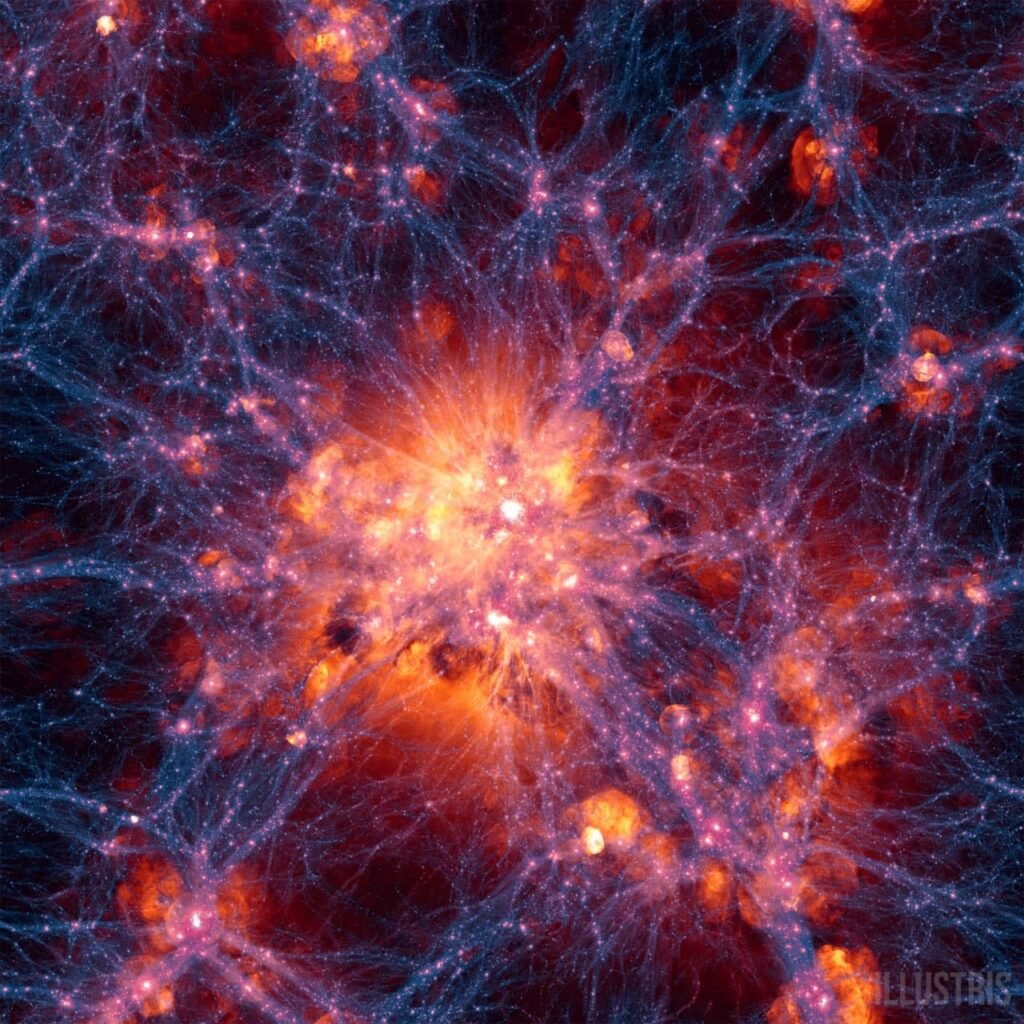In a new study, a team of astronomers from the Leibniz Institute for Astrophysics in Potsdam (AIP), with the help of scientists from China and Estonia, have found some evidence that suggests that The Largest Structures in Universe – cosmic filaments up to hundreds of millions of light-years long – has started spinning.
Study co-author Noam Libeskind, a cosmologist at the Leibniz Institute in Germany, told Space.com that,
“Celestial bodies often spin, from planets to star to galaxies. However, giant clusters of galaxies often spin very slowly, if at all, and so many researchers thought that is where spinning might end on cosmic scales.”
But in this new research, with his colleagues, Libeskind found that cosmic filaments, or gigantic tubes made of galaxies, also spin. Talking about The Largest Structures in Universe Libeskind said “There are structures so vast that entire galaxies are just specks of dust. These huge filaments are much, much bigger than clusters.”
The cosmic filament is a huge bridge made up of galaxies and dark matter, connecting galaxy clusters around the cosmos. The filaments gather the galaxies into large clusters at the ends of the filaments. These filaments are described as a kind of cosmic highway in the cosmic web, and astronomers used the Sloan Digital Sky Survey – a study of hundreds of thousands of galaxies – to map the motion of galaxies in these filaments.
By using data from Sloan, the scientists were able to study 17,000 filaments and determined an interesting new feature of the filaments, that is the rotation of these filaments. The fastest speed at which researchers recorded galaxies rotating around the central axis of the filaments was approximately 223,700 mph (360,000 kph). Though scientists noted they do not suggest that “every single filament in the universe spins, but that spinning filaments do seem to exist.”
This kind of rotation/spin in these huge tendrils of material is so enormous in scale that the galaxies it contains are like grains of dust. “They move on helixes or corkscrew-like orbits, circling around the middle of the filament while traveling along with it,” said Libeskind. “Such a spin has never been seen before on such enormous scales, and the implication is that there must be an as yet unknown physical mechanism responsible for torqueing these objects.”

Though Space.com speculates that the rotation may have been caused by the powerful gravitational fields of these filaments pulling in gas, dust, and other material. However, how exactly the angular momentum that causes rotation in The Largest Structures in Universe is produced is one of the main mysteries of cosmology. According to the standard model of structure formation, as matter flows from below into high-density regions, the small hyperdensity in the early universe increased due to gravitational instability.
This type of potential flow does not twist or ripple. Researchers say that the early universe had no primitive rotation.
This means that any rotation that exists in the universe must be produced in structural form. Generally speaking, cosmic networks and filaments are closely related to the formation and evolution of galaxies. These filaments also significantly affect the spin of galaxies, usually regulating the direction of rotation of galaxies and their associated dark matter halos.
However, astronomers admit that it is unknown whether the current understanding of structure formation predicts that the filament itself should rotate.
For more info about the rotation/spin of The Largest Structures in Universe, you can read the findings of the study published in a paper in the journal Nature Astronomy on Monday, June 14, titled ‘Possible Observational Evidence for Cosmic Filament Spin’.

2 Comments
Pingback: Very Large Telescope Captures stunning images of Cosmic Fireworks - Craffic
Pingback: Astronomers simulate an entire virtual universe that you can even download for free - Craffic